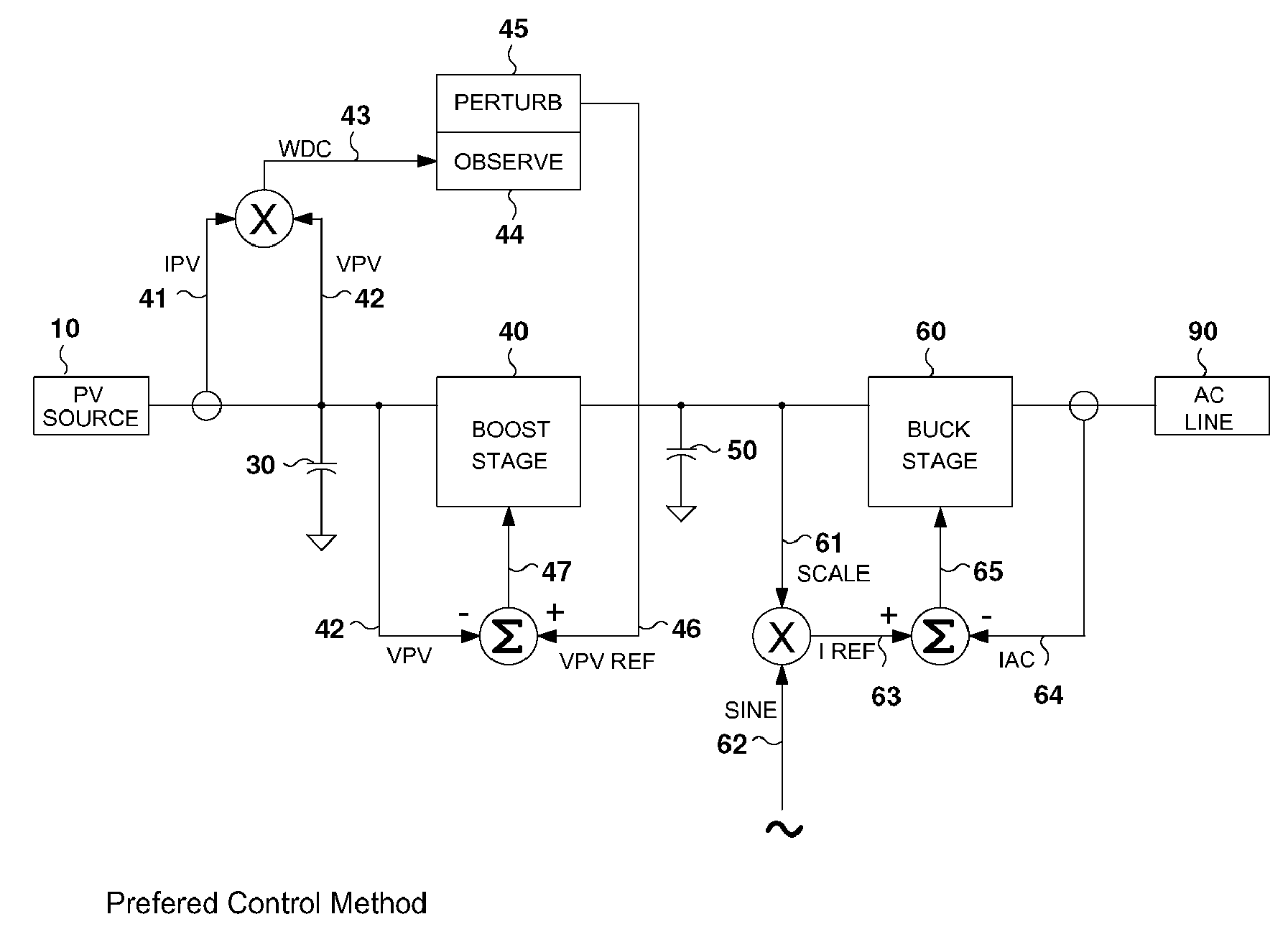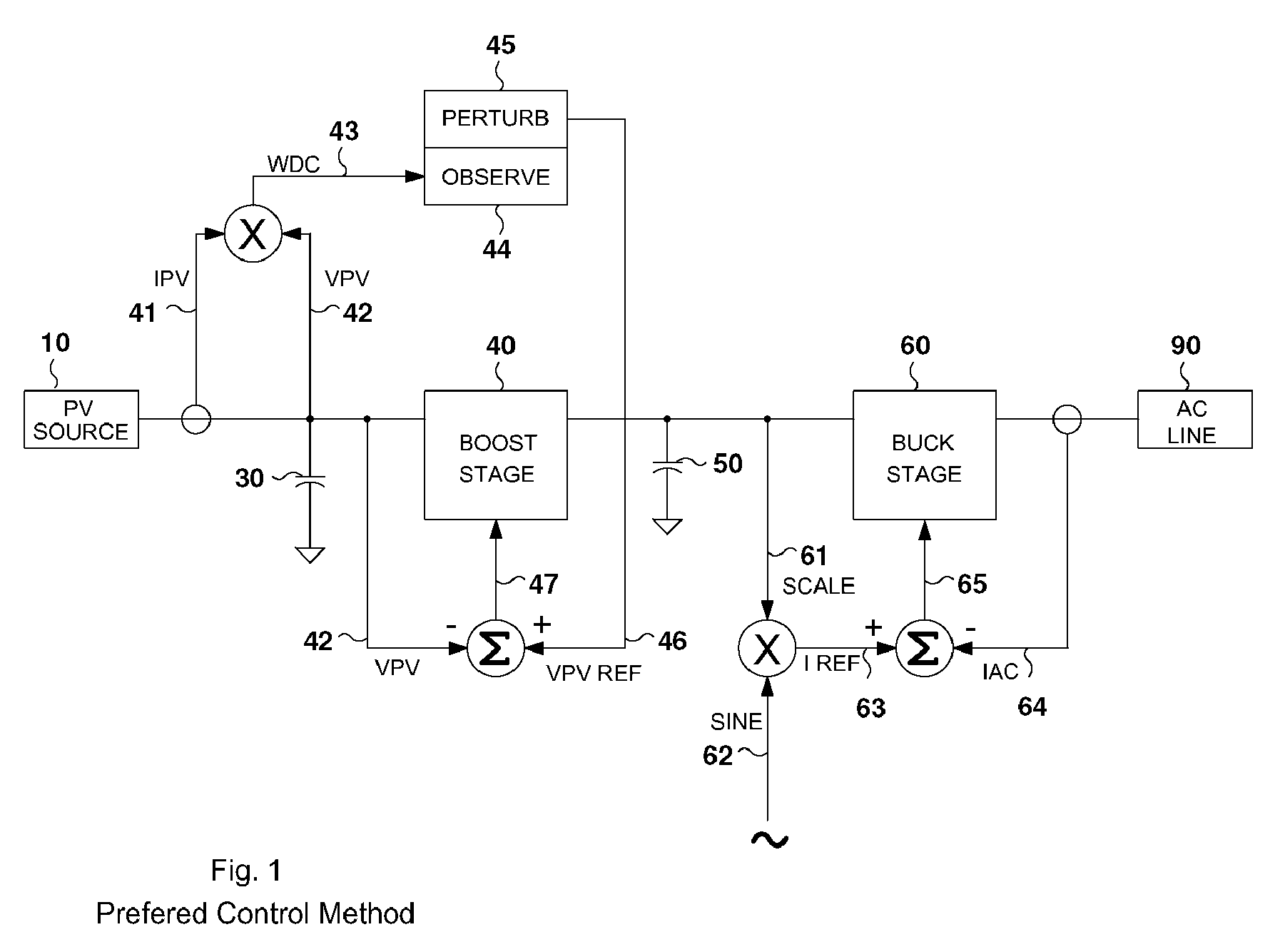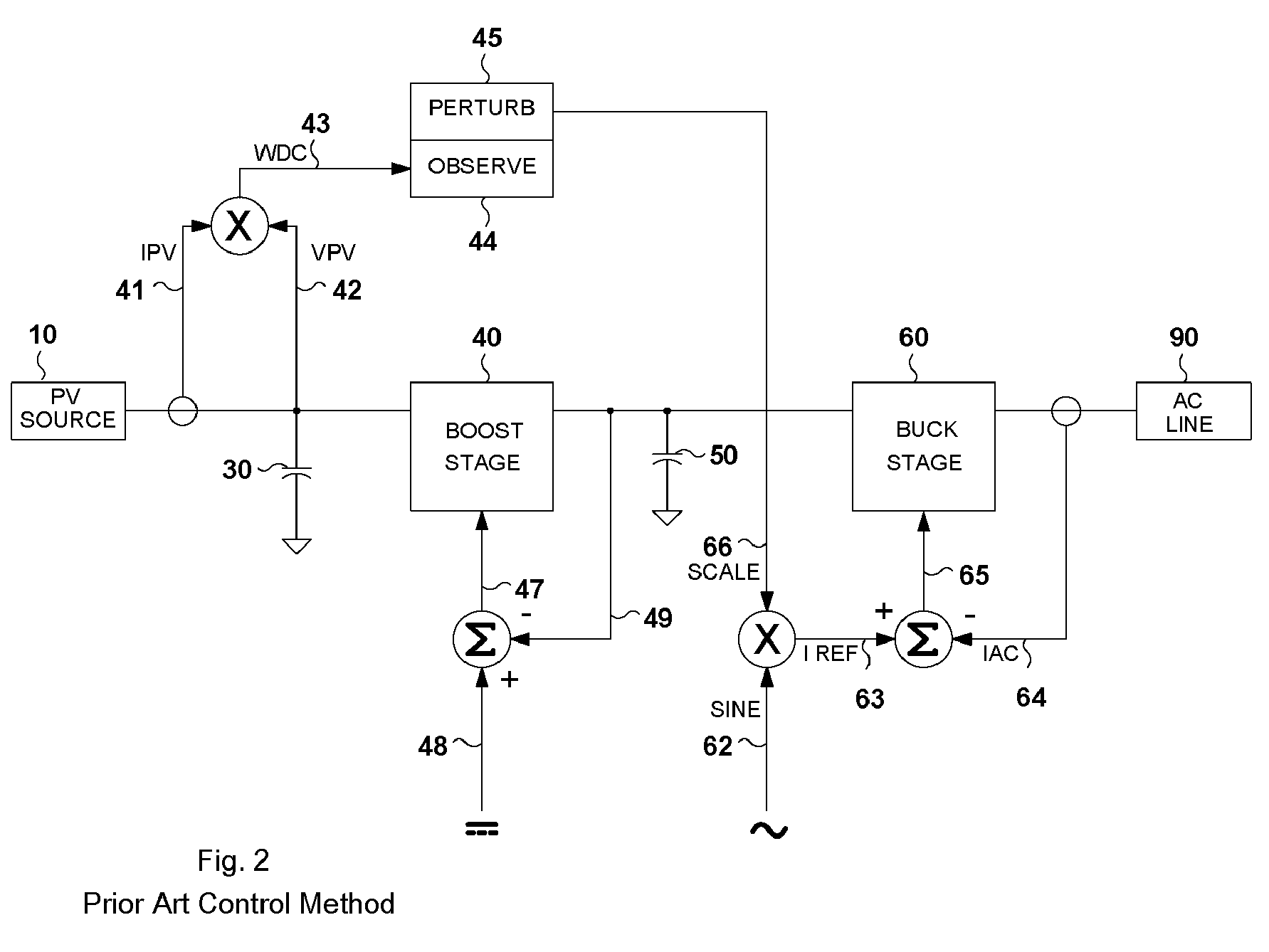Photovoltaic dc-to-ac power converter and control method
a technology of photovoltaic dc-to-ac and power converter, applied in the direction of electric variable regulation, process and machine control, instruments, etc., can solve the problems of inability to achieve maximum power point in an unstable region, poor dynamic response, and unstable prior art control method, etc., to achieve the effect of improving stability
- Summary
- Abstract
- Description
- Claims
- Application Information
AI Technical Summary
Benefits of technology
Problems solved by technology
Method used
Image
Examples
Embodiment Construction
[0012]FIG. 1 illustrates the preferred embodiment of the control arrangement for the DC-to-AC power converter. This power converter has a pulse width modulated, voltage regulating boost stage and a pulse width modulated, current regulating buck stage. Sinusoidal reference 62 follows the AC line voltage and frequency. AC line current reference 63 is generated by multiplying sinusoidal reference 62 by scaling factor 61. Scaling factor 61 is a measure of the voltage on energy storage capacitor 50. Actual AC line current 64 is compared to AC line current reference 63 to create error signal 65. Error signal 65 drives buck stage 60 as part of this servo loop. The net effect is the voltage on energy storage capacitor 50 is regulated by the amount (the amplitude) of current 64 sourced into AC line 90. Current 41 and voltage 42 of PV source 10 are sensed and multiplied to provide 43, a measure of PV source 10 output power. PV reference voltage 46 is the desired operating point of PV source 1...
PUM
 Login to View More
Login to View More Abstract
Description
Claims
Application Information
 Login to View More
Login to View More - R&D
- Intellectual Property
- Life Sciences
- Materials
- Tech Scout
- Unparalleled Data Quality
- Higher Quality Content
- 60% Fewer Hallucinations
Browse by: Latest US Patents, China's latest patents, Technical Efficacy Thesaurus, Application Domain, Technology Topic, Popular Technical Reports.
© 2025 PatSnap. All rights reserved.Legal|Privacy policy|Modern Slavery Act Transparency Statement|Sitemap|About US| Contact US: help@patsnap.com



